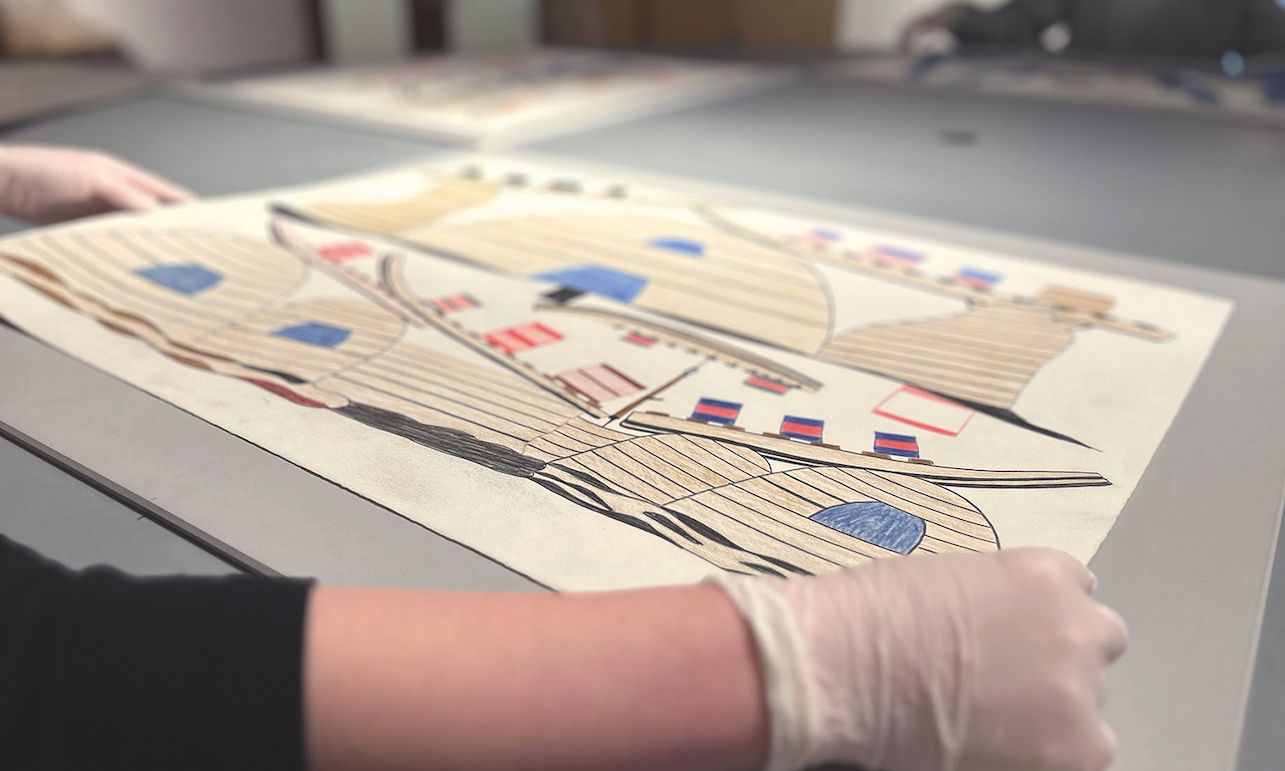Workers in Burtynsky’s Toronto studio use the customised scanning system known as ARKIV360 to process Inuit drawings at a rate of as many as 900 works in a day. The scanned images are being made available online for free
Photo © Alanna Joanne Smith
A trove of Inuit art—some 89,000 drawings in all—was created in Cape Dorset (now Kinngait) near the southern tip of Baffin Island between 1950 and 1980, providing a way for the community in Canada’s remote Nunavut territory to generate income. But very few of those works have seen the light of day through the issuing of limited-edition prints, with the Toronto market very much in mind.
After a devastating fire destroyed a similar archive in a nearby Arctic community, the Ontario-based McMichael Canadian Art Collection offered to house the Cape Dorset drawings in 1990 in trust for the West Baffin Eskimo Cooperative, giving them a secure home. “Inuit art was always folded into our national identity,” says Sarah Milroy, the McMichael’s chief curator, making the acquisition an obvious move.
Unfortunately, since then the collection has only been accessible for viewing in person at the McMichael, which is based in Kleinburg, a village north of Toronto. That necessitated handling the work, too, raising conservation issues. So, for the most part, the art lingered in what Edward Burtynsky, famed Canadian photographer who would enter the picture in 2019, calls “high-priced, temperature-controlled vaults”. The drawings, he adds, “had a nice, deep sleep, 30-plus years”.
Digitisation is rousing the works from their slumber, allowing free and full access to the McMichael’s collection of Inuit drawings, thanks in large part to Burtynsky and his bespoke ARKIV360 scanner—which he calls “my baby”. “During Covid, the outcry became really loud,” he says. “We were way back in terms of digitisation.”
Burtynsky realised there was a need for such a machine from his dealings with Toronto Metropolitan University (formerly Ryerson University), which has an even larger collection, yet to be digitised. “We were the guinea pig,” Milroy says.
The complex machine, originally conceived in collaboration with Adam Lowe and conservation firm Factum Arte and subsequently tweaked and improved by Burtynsky and his team, is capable of quickly scanning two-dimensional works at very high resolutions. It was initially housed at the McMichael and is now installed at Burtynsky’s downtown Toronto studio, where a staff of three works on it full-time. Whereas previous devices made it possible to digitise some 100 drawings per day, Burtynsky’s proprietary machine and software can scan up to 900 works in a day while significantly cutting costs. “It works out to a couple bucks each, as opposed to $40 before,” he says.
“It would have taken half a lifetime without Ed’s machine” to scan the McMichael’s collection, Milroy says. “By October, we’ll have the whole kit and caboodle.”
Works that have already been scanned are publicly available on the website Iningat Ilagiit, whose name means “a place for family” in Inuktitut. The site is available in English, French and Inuktitut; it includes a low-bandwidth option for users in remote regions with slower connections. In the final phase, an Inuit scholar will be enlisted to study the archive and curate a major exhibition at the McMichael scheduled for the spring of 2025.
As Jennifer Withrow, the head of exhibitions and publications at the McMichael, sees it, “This is a transformational moment, both in the art world—the origin oracle of Cape Dorset artmaking, accessible to all at last—and in the museum sector, a cost-effective way to digitise an enormous archive.”

